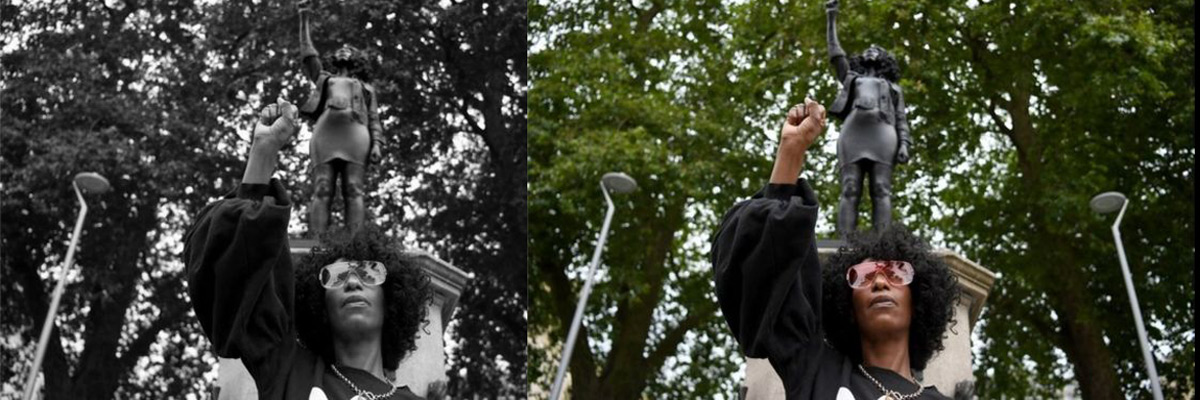“When I was stood there on the plinth, and raised my arm in a Black Power salute, it was totally spontaneous, I didn’t even think about it. My immediate thoughts were for the enslaved people who died at the hands of (Edward) Colston and to give them power. I wanted to give George Floyd power, I wanted to give power to Black people like me who have suffered injustices and inequality,” says Jen Reid in an interview with DeZeen about this new piece called “A Surge of Power”.
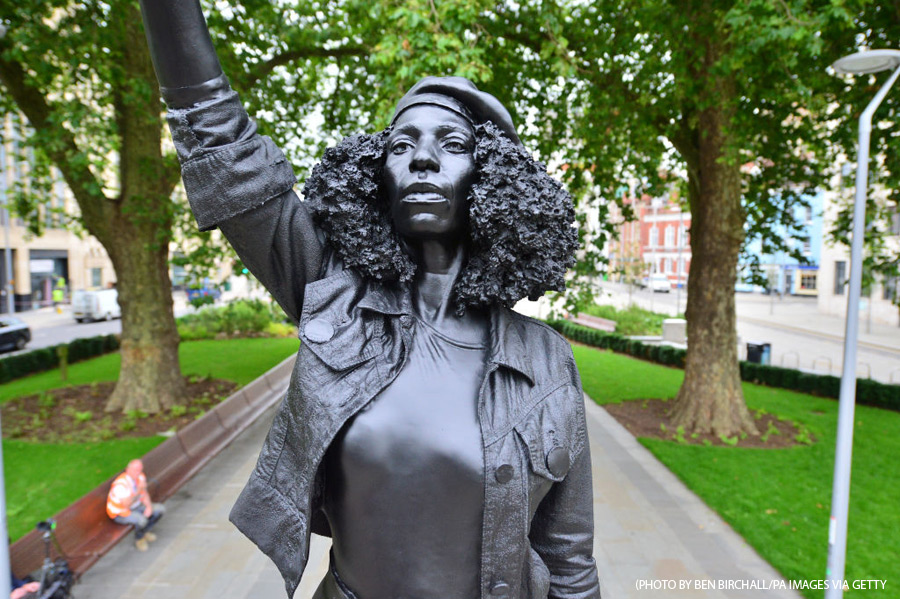
A remarkable substitution was placed here on July 15th, only 8 days after a sculpture of the slave trader Colston was toppled from the same place. Various publications give the previous occupant honorable descriptors like 17th/18th-century Bristol merchant and philanthropist – as if it is an act of magnanimous charity to be a philanthropist after you’ve made your money from extracting years of free labor from people whom you’ve enslaved.
Jen Reid had struck this pose atop the empty plinth and according to published accounts artist Marc Quinn shot a photo of her at that moment, black beret over voluminous locks, fist punching the sky. In consultation with Reid the artist created a monument to that moment – resin and steel cast from a 3D print. With a team of about 10 the new sculpture rose in the early morning hours.
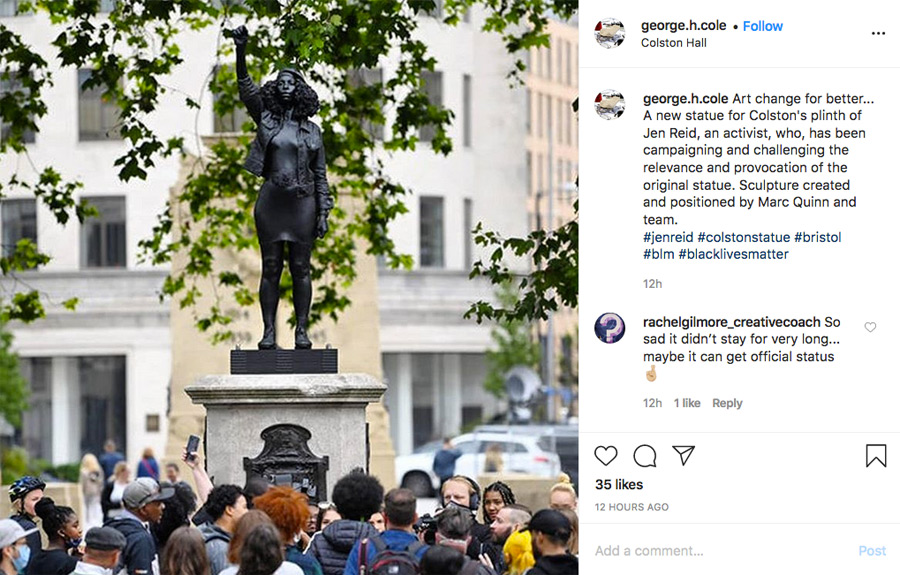
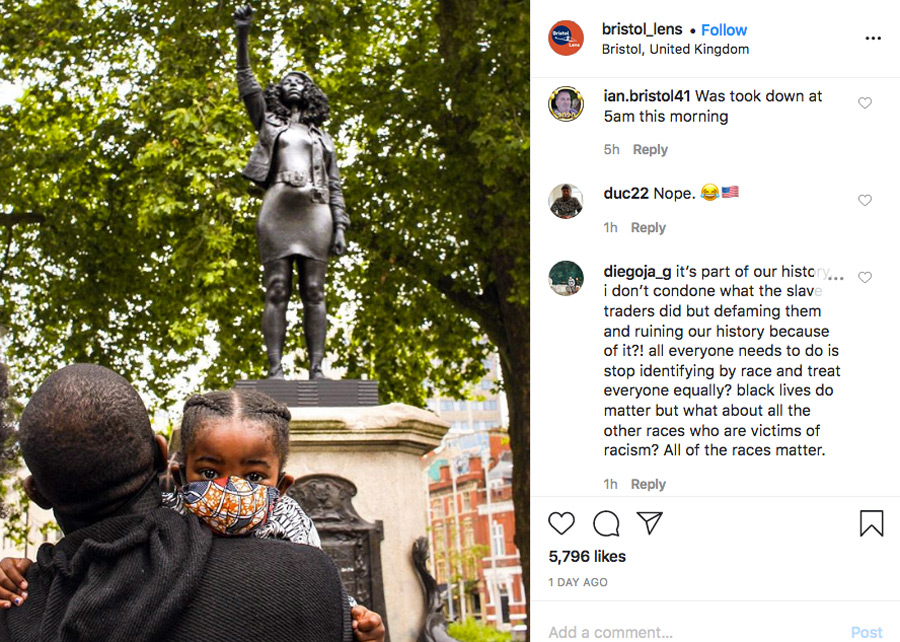
Public space often affords artistic or aesthetic expression only for the privileged, the moneyed, those given permission by “experts”, or corporations who foist their message there. Street artists have been creating new monuments in the last decade and a half, often surreptitiously placing them overnight, sometimes so subtly that the new works don’t attract attention for many days. Once focused primarily on aerosol exclusively, this new generation consider a panoply of artful interventions and “culture jamming” to be as virile and pugnacious.
Here a glistening black heroic figure is well within the wheelhouse of Quinn, who is not considered as a street artist, per se. Moved by the message, he seized an historic moment to use the tools he is familiar with and the voice he wields to collaborate with someone else marching and living in the thick of the structural racism that is being protested, studied, acknowledged, denied.
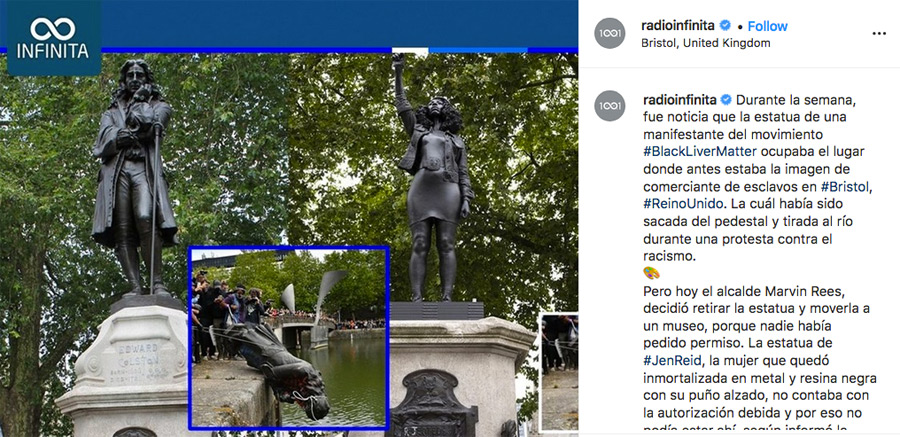
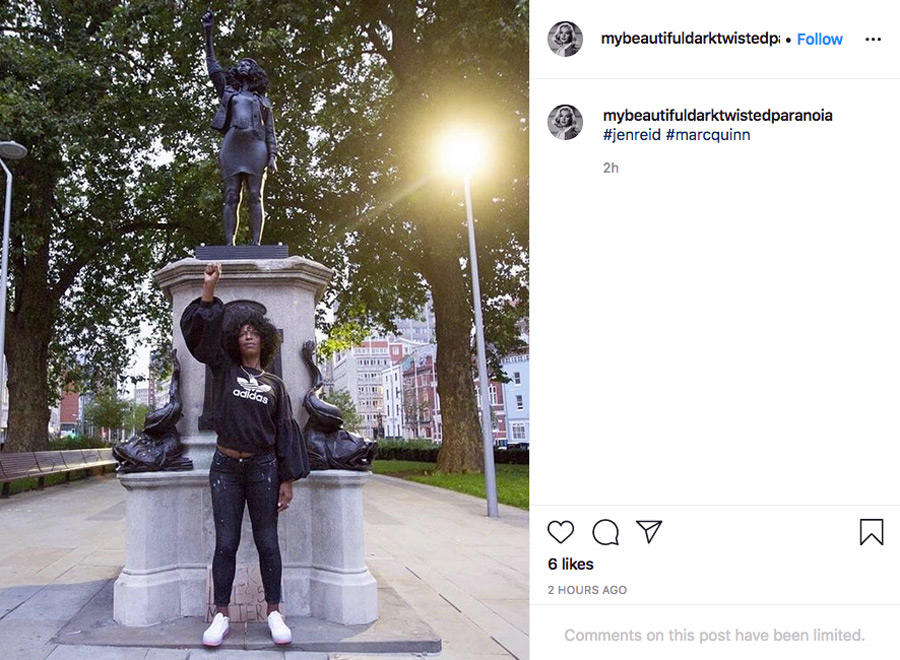
When it comes to offering opinion about art in public space, it is not surprising how many people take responsibility or a sense of ownership of projects, feel personally gifted or wounded by the presence or absence of a sculpture. The removal of many public sculptures in the last months has thrown the conversations into tumult, raising topics previously squelched or avoided. In an era that is pregnant with the possibility of radical transformation, more people are invested across the culture than at any time in recent memory.
Up and on view only a day, the City of Bristol has removed this triumphant figure of Jen Reid. One wonders if these city leaders are always so rapid in their response to all of their duties. Considering the reports of positive reviews from a majority of passersby during the sculpture’s first day in public, snatching it from public space with such dispatch smacks of silencing speech – especially when you learn that the previous sculpture of Edward Colston – the deputy governor of the Royal African Company – had reigned freely over the spot for 125 years.

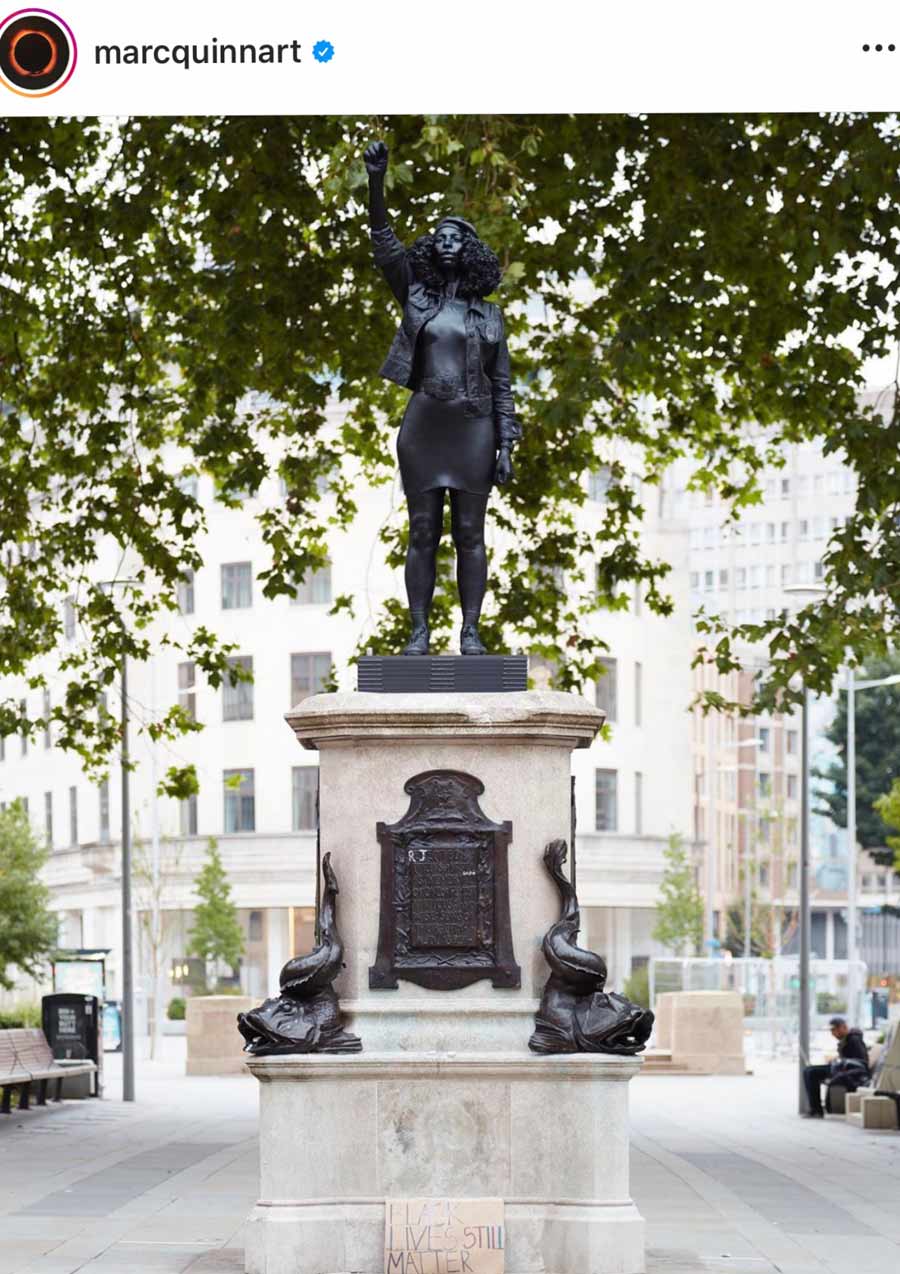
Other Articles You May Like from BSA:
It must be sooooooooooo hard to paint a mural in paradise. Hollbox Island is the home of the first international public art festival in Mexico and appears to be a good location to test this theory....
Rachel Carson died on this day in 1964 – her life awakening man/womankind’s environmental conscience. Today on Earth Day we remember that corporations hire PR firms to tell us misinformation abou...
Our weekly focus on the moving image and art in the streets. And other oddities. Now screening:1. "Bubble Tea" with Sofles2. Doug Gillem Discusses Stereotypes in Street Art3. Vero Rivera in Co...
Our weekly focus on the moving image and art in the streets. And other oddities. Now screening : 1. ROME in the Street and the Gallery by Dioniso Punk 2. Hendrik Beikirch (ECB): East Harbor...
These quiet bits of visual punctuation on telephone poles in Albany caught our eye recently and we thought immediately of fairies, pixies, and sprites. Who else would care enough to adorn wooden telep...
 BROOKLYN STREET ART LOVES YOU MORE EVERY DAY
BROOKLYN STREET ART LOVES YOU MORE EVERY DAY